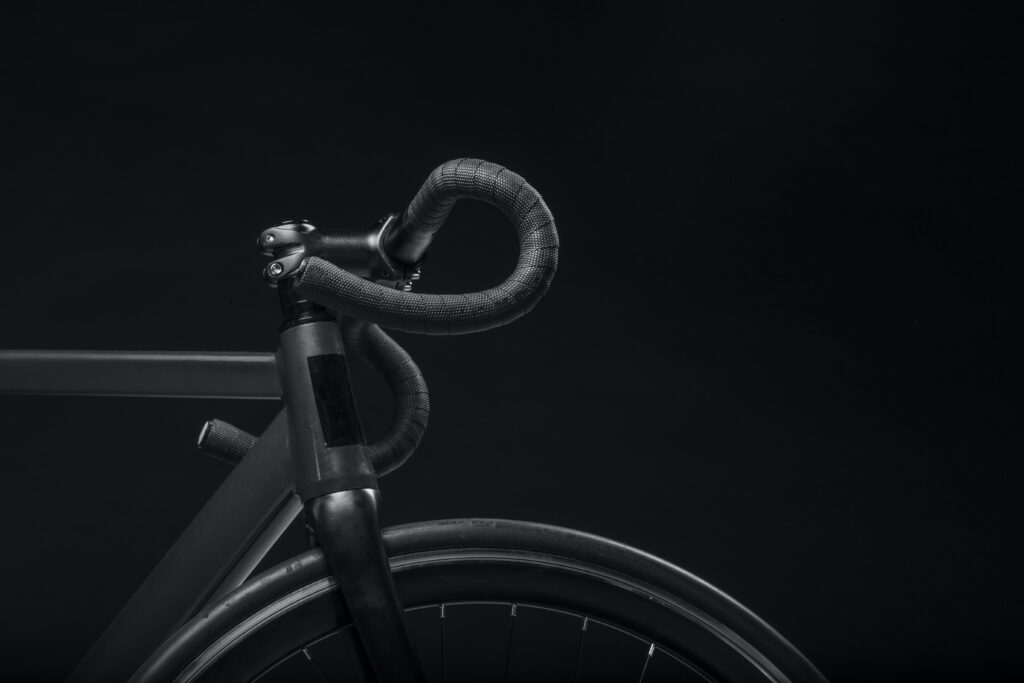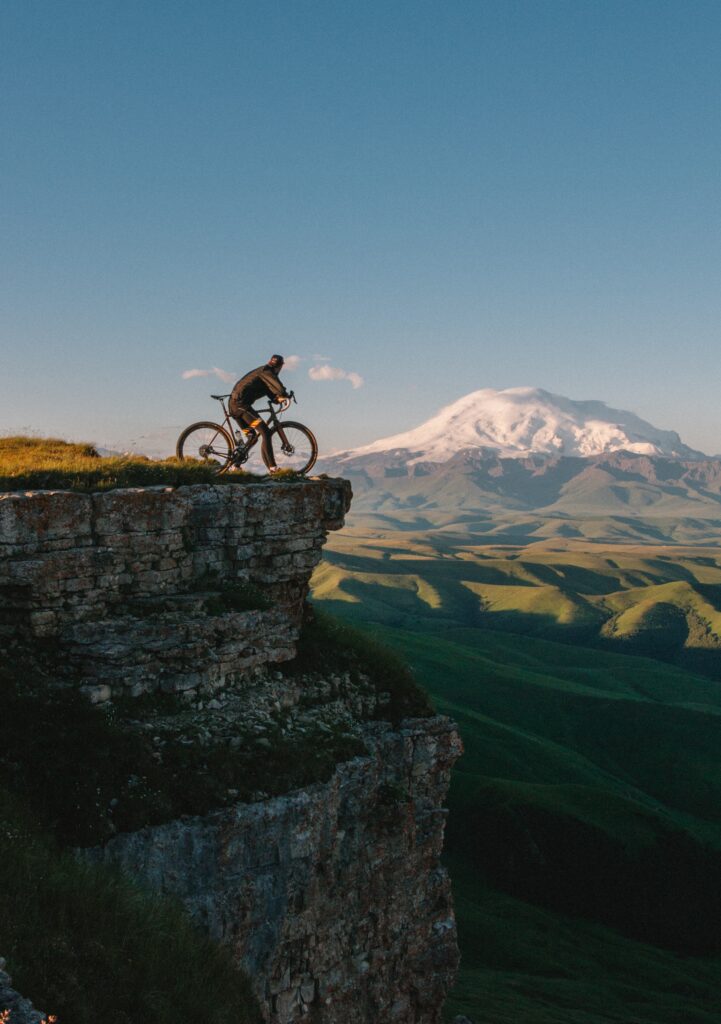Hey there, fellow E-Bike enthusiasts! Get ready to take your riding skills to the next level as we delve into the world of advanced e-bike cornering. In this article, we’ll equip you with the knowledge and techniques necessary to navigate turns smoothly and confidently. Whether you’re an intermediate rider looking to improve your cornering skills or an advanced rider seeking to fine-tune your technique, this is the go-to resource for mastering e-bike cornering. So hop on your e-bike, buckle up your helmet, and get ready to conquer those corners like a pro!
Understanding the Importance of Cornering
The role of cornering in e-bike riding
When it comes to e-bike riding, cornering plays a crucial role in maintaining control and maneuvering around turns smoothly. Cornering refers to the process of navigating through corners, whether they are flat turns, hairpin turns, off-camber turns, or switchback turns. It involves a combination of body positioning, speed control, and line selection to maintain balance and stability.
Benefits of mastering cornering skills
Mastering cornering skills not only enhances your overall riding experience but also improves your safety on the road. Proper cornering techniques allow you to maintain control and stability, reducing the risk of accidents and potential injuries. Efficient cornering can also help you conserve energy and maintain momentum, allowing for a more enjoyable and efficient ride.
Preparing for Cornering
Choosing the right tires
One of the first steps in preparing for cornering is choosing the right tires for your e-bike. The type of tire you use can greatly affect your ability to grip the road surface during cornering. Look for tires with a tread pattern that provides good traction on various surfaces, such as asphalt, gravel, or dirt. Consider the width of the tire as well, as wider tires generally offer more stability during cornering.
Checking tire pressure
Maintaining the correct tire pressure is essential for optimal cornering performance. Make sure to regularly check and adjust your tire pressure according to the manufacturer’s recommendations. Proper tire pressure ensures a balanced contact patch with the road, allowing for better grip and control while cornering.
Ensuring proper bike fit
To corner effectively, it’s important to ensure that your e-bike is properly fitted to your body. This includes adjusting the saddle height, handlebar position, and reach to ensure a comfortable and balanced riding position. A well-fitted bike not only improves overall comfort but also allows for better control and maneuverability while cornering.
Adjusting suspension settings
If your e-bike is equipped with suspension, adjusting the suspension settings can greatly affect cornering performance. The suspension should be set up to match your weight and riding style, providing a balance between comfort and control. Experiment with different suspension settings to find the optimal configuration for cornering.

Body Positioning for Effective Cornering
The correct riding posture
Maintaining the correct riding posture is essential for effective cornering. Keep your body relaxed and balanced, with your weight evenly distributed between the front and rear wheels. Bend your elbows and knees slightly, allowing for better absorption of bumps and vibrations. Keep your head up and eyes focused on the exit of the corner.
Weight distribution during cornering
Proper weight distribution is crucial for maintaining traction while cornering. As you enter a corner, shift your weight slightly towards the outside foot peg or pedal. This helps to counterbalance the centrifugal force and maintain grip on the road. Avoid leaning too heavily on the handlebars, as this can affect your ability to steer smoothly.
Using your legs for stability
Utilizing your legs for stability during cornering can greatly improve your control and balance. Keep your outside leg extended and your inside leg bent, acting as a counterbalance to the bike’s lean. This technique helps to prevent the bike from sliding out and allows for smoother cornering.
Maintaining a relaxed upper body
Keeping your upper body relaxed and loose is essential for effective cornering. Avoid stiffening your arms and shoulders, as this can hinder your ability to steer smoothly. Instead, focus on maintaining a light grip on the handlebars and allowing your body to move fluidly with the bike.
Approaching the Corner
Scanning the road ahead
Before entering a corner, it’s important to scan the road ahead and assess the upcoming turn. Look for any obstacles, road conditions, or changes in elevation that may affect your cornering technique. This allows you to anticipate and adjust your approach accordingly.
Choosing the best line
Selecting the best line through a corner is crucial for maintaining speed and control. The ideal line will typically follow the widest arc possible, allowing for a smoother and faster exit. Consider the radius of the corner, road conditions, and your own comfort level when choosing your line.
Adjusting speed and braking
Proper speed management is key to successful cornering. Slow down to a controlled speed before entering the corner, ensuring that you have enough time to react and adjust if needed. Avoid hard braking while in the middle of the corner, as this can cause loss of traction and instability. Instead, brake in a straight line before entering the corner, gradually releasing the brakes as you negotiate the turn.

Executing the Corner
Entering the corner at the right speed
Entering the corner at the appropriate speed is crucial for a smooth and controlled execution. If you enter the corner too fast, you risk losing traction and veering off the intended line. On the other hand, entering the corner too slow can cause unnecessary drag and hinder your ability to maintain momentum. Find the right balance by gradually adjusting your speed as you approach the turn.
Leaning into the turn
As you enter the corner, lean your body and bike into the turn. This allows for better weight distribution and minimizes the risk of the bike sliding out from under you. Use your lower body and legs to initiate the lean, keeping your upper body relaxed and aligned with the bike. The amount of lean will depend on the speed, radius, and road conditions of the corner.
Maintaining a line through the apex
As you navigate through the corner, focus on maintaining a smooth and consistent line. Aim to hit the apex, which is the point of the corner closest to the inside. This line allows for a wider arc and a faster exit. Be mindful of any road conditions or obstacles that may require slight adjustments to your line.
Accelerating out of the corner
As you exit the corner, gradually increase your speed and accelerate smoothly. By doing so, you can maximize your momentum and regain any speed lost during the cornering process. Maintain control and be aware of any potential hazards or changes in road conditions as you accelerate out of the turn.
Dealing with Different Types of Turns
Mastering basic flat turns
Basic flat turns are the most common type of corner you will encounter while riding your e-bike. These turns require a combination of proper body positioning, speed control, and line selection. Practice cornering techniques on a level surface with a wide radius before attempting more challenging turns.
Conquering hairpin turns
Hairpin turns are sharp corners with a tight radius. These turns require precise execution and careful speed management. When approaching a hairpin turn, slow down significantly, and focus on a smooth and controlled entry. Lean your body and bike into the turn, and be prepared to use your legs and lower body to maintain balance.
Navigating off-camber turns
Off-camber turns are corners where the road surface slopes away from the direction of the turn. These turns can be particularly challenging as they can reduce traction and stability. When navigating off-camber turns, approach with caution and reduce your speed. Shift your weight towards the inside of the turn to maintain grip and control.
Handling switchback turns
Switchback turns are tight corners that require a quick change in direction. These turns often occur on steep ascents or descents and demand precise handling. Maintain a controlled speed and anticipate the change in direction. Lean your bike and body into the turn while using your legs to stabilize and support your weight.

Common Mistakes to Avoid
Braking too late
Braking too late while entering a corner can result in loss of control and reduced traction. It’s important to anticipate the corner and brake in a straight line before you begin turning. Gradually release the brakes as you negotiate the turn, allowing for a smoother and more controlled cornering experience.
Overleaning or underleaning
Proper lean angle is crucial for cornering, as it helps to maintain balance and control. Overleaning can cause the bike to slide or lose traction, while underleaning can hinder your ability to navigate the turn smoothly. Practice finding the correct lean angle for different types of corners, gradually increasing your comfort and confidence.
Inconsistent pedal strokes
Inconsistent pedal strokes can disrupt your momentum and stability while cornering. Focus on maintaining a smooth and steady cadence throughout the corner, adjusting your gear selection as needed. Avoid sudden bursts of acceleration or deceleration, as these can affect your balance and traction.
Not looking through the corner
Maintaining proper vision and focus is essential for successful cornering. Avoid fixating on the immediate road surface directly in front of you. Instead, look through the corner, focusing on the exit point and scanning for potential hazards or changes in road conditions. Keeping a wide field of vision allows for better anticipation and response.
Advanced Cornering Techniques
Using countersteering for sharper turns
Countersteering is a technique used to initiate sharper turns at higher speeds. To countersteer, apply slight pressure to the inside handlebar, which causes the bike to lean in the opposite direction. This technique allows for quicker and more precise maneuvers, especially in situations where slower speed and tighter turns are required.
Trail braking for improved control
Trail braking involves lightly applying the brakes while entering and throughout the corner. This technique helps to transfer weight to the front wheel, improving traction and control. It allows for better modulation of speed and can be particularly helpful in situations where the road conditions or the severity of the turn require additional control.
Recovering from a cornering slide
In the event of a cornering slide or loss of traction, it’s important to remain calm and take appropriate action to recover. If the rear wheel slides, ease off the throttle and gently steer in the direction you want to go. If the front wheel loses grip, gradually release the brakes and steer towards the inside of the turn. Practice recovery techniques in controlled environments to build confidence and improve response.
Neutralizing the bike for tight turns
In situations where tight turns are required, it may be necessary to neutralize the bike, reducing or minimizing lean angle. This technique involves keeping the bike more upright by using the handlebars and your body to maintain balance and control. Neutralizing the bike allows for quicker direction changes and tighter turns.

Improving Cornering Confidence
Practicing in safe environments
To improve your cornering skills, it’s important to practice in safe environments with minimal traffic and distractions. Look for large open spaces, empty parking lots, or designated training areas where you can focus on honing your technique without the worry of oncoming vehicles or pedestrians. Start with basic corners and gradually progress to more challenging turns as your confidence increases.
Gradually increasing speed and difficulty
As you gain proficiency in cornering, gradually increase your speed and the difficulty of the turns. Pushing your limits in a controlled manner allows you to build confidence and expand your capabilities. However, always prioritize safety and be aware of your own comfort level and riding conditions.
Seeking guidance from experienced riders
Don’t hesitate to seek guidance and advice from experienced riders or e-bike enthusiasts. They can offer valuable insights, tips, and techniques that they have learned through their own experiences. Join local e-bike groups or forums, attend workshops or clinics, and participate in group rides to learn from others and enhance your cornering skills.
Analyzing and learning from mistakes
Mistakes are a natural part of the learning process. When you encounter challenges or make errors while cornering, take the opportunity to analyze and learn from them. Reflect on what went wrong, identify areas for improvement, and adjust your technique accordingly. This iterative process of evaluation and adjustment will help you continuously develop and refine your cornering skills.
Conclusion and Final Tips
The importance of deliberate practice
Mastering cornering skills takes time, effort, and deliberate practice. Regularly dedicate focused practice sessions to cornering techniques, gradually building your proficiency and confidence. Consistency and repetition are key to developing muscle memory and refining your technique.
Taking your time to develop skills
Improving your cornering skills is a gradual process, and it’s important to be patient with yourself. Don’t rush the learning journey and avoid the temptation to attempt more advanced maneuvers before you have fully mastered the basics. Take the time to build a solid foundation of cornering skills, and gradually progress as you become more comfortable and confident.
Enjoying the process of mastering cornering
Remember to enjoy the process of mastering cornering skills. Embrace the challenges, celebrate your progress, and take pride in your accomplishments. Cornering is not just a technical aspect of e-bike riding; it’s an art form that allows you to flow with the road and experience the joy of navigating turns smoothly and seamlessly.
So, fellow e-bike enthusiasts, go out and explore the world of cornering with confidence and finesse. With the right preparation, technique, and mindset, you’ll be amazed at the level of control and enjoyment you can experience while traversing your favorite routes and conquering new challenges. Happy riding!




